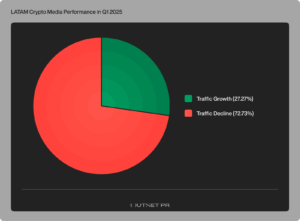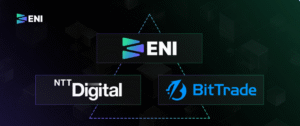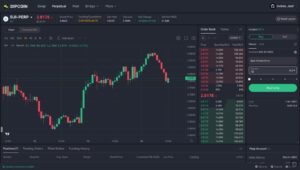
How to Build Your Own Crypto Exchange: A Technical Guide
Cryptocurrency exchanges have become increasingly popular in recent years, with many investors flocking to these platforms to buy and sell cryptocurrencies. Building your own crypto exchange can be a rewarding experience, but it requires technical knowledge and expertise. In this article, we will provide a technical guide on how to build your own crypto exchange.
Introduction
Building a crypto exchange requires technical knowledge of blockchain technology, cryptocurrencies, and software development. In this article, we will provide a technical guide on how to build your own crypto exchange.
Steps to Building a Crypto Exchange
Here are the steps to building your own crypto exchange:
Choose a Blockchain Platform
The first step in building a crypto exchange is choosing a blockchain platform. Some popular options include Bitcoin, Ethereum, and Ripple.
Develop the Backend
The backend of a crypto exchange is the engine that powers the platform. It is responsible for handling transactions, user accounts, and other key functions. Developers can use programming languages such as Python, Ruby on Rails, and Java to develop the backend of a crypto exchange.
Develop the Frontend
The frontend of a crypto exchange is the user interface that allows users to interact with the platform. Developers can use frameworks such as AngularJS, ReactJS, and VueJS to develop the frontend of a crypto exchange.
Integrate Payment Gateways
Integrating payment gateways is an essential step in building a crypto exchange. Payment gateways allow users to deposit and withdraw funds from the exchange. Developers can use payment gateway providers such as Stripe, PayPal, and BitPay to integrate payment gateways.
Implement Security Measures
Implementing security measures is crucial for protecting the exchange from cyber attacks and theft. Developers can use techniques such as SSL encryption, two-factor authentication, and multi-signature wallets to enhance the security of the exchange.
Test and Launch
Testing the exchange is an important step before launching it to the public. Developers can use testing frameworks such as Selenium and Protractor to test the functionality of the exchange. Once the exchange has been thoroughly tested, it can be launched to the public.
Compliance and Regulation
Compliance and regulation are important considerations when building a crypto exchange. Some key points to consider include:
Know Your Customer (KYC) and Anti-Money Laundering (AML) Compliance
KYC and AML compliance are essential for preventing money laundering and terrorist financing. Developers should implement robust KYC and AML procedures to ensure compliance with regulatory requirements.
Regulatory Frameworks
Developers should also be aware of the regulatory frameworks in their jurisdiction and ensure that the exchange complies with relevant laws and regulations.
Liquidity and Market Making
Liquidity and market making are important considerations for building a successful crypto exchange. Some key points to consider include:
Liquidity Providers
Developers should identify and partner with liquidity providers to ensure that the exchange has sufficient liquidity to meet user demand.
Market Making
Market making is the process of creating buy and sell orders for a particular cryptocurrency pair to ensure liquidity. Developers can use market making algorithms to facilitate this process.
Scaling and Maintenance
Scaling and maintenance are important considerations for ensuring the long-term success of a crypto exchange. Some key points to consider include:
Scalability
Developers should design the exchange to be scalable, so that it can handle increased traffic and trading volumes.
Maintenance and Upgrades
Regular maintenance and upgrades are essential for keeping the exchange running smoothly and ensuring that it remains up-to-date with the latest technology.
Customer Support
Customer support is an essential component of a successful crypto exchange. Some key points to consider include:
Support Channels
Developers should provide users with multiple channels for support, such as email, phone, and chat support.
Response Times
Developers should aim to respond to user inquiries and support requests in a timely manner to ensure customer satisfaction.
User Experience (UX)
The user experience is an important consideration when building a crypto exchange. Some key points to consider include:
Design
The design of the exchange should be user-friendly and intuitive, with a clear and consistent layout.
Functionality
The exchange should be easy to use and provide users with access to a range of trading tools and features.
Partnerships and Integrations
Partnering with other companies and integrating with other platforms can help to enhance the functionality and user experience of a crypto exchange. Some key points to consider include:
Payment Processors
Integrating with payment processors can make it easier for users to deposit and withdraw funds from the exchange.
Trading Tools and Analytics
Partnering with companies that provide trading tools and analytics can enhance the functionality of the exchange and provide users with valuable insights into the cryptocurrency markets.
Marketing and Promotion
Marketing and promotion are important considerations for building a successful crypto exchange. Some key points to consider include:
Target Audience
Developers should identify their target audience and tailor their marketing and promotion efforts to appeal to this audience.
Social Media
Social media can be a powerful tool for promoting a crypto exchange and engaging with users. Developers should have a strong social media presence and engage with users on platforms such as Twitter, Reddit, and Telegram.
Analytics and Metrics
Analytics and metrics can help developers to track the performance of their crypto exchange and identify areas for improvement. Some key points to consider include:
User Engagement Metrics
Developers should track user engagement metrics, such as the number of users, trading volume, and user retention rates.
Technical Metrics
Developers should also track technical metrics, such as server uptime, page load times, and error rates, to ensure that the exchange is running smoothly and efficiently.
Future Developments
Building a successful crypto exchange requires ongoing development and innovation. Some key areas for future development include:
New Cryptocurrencies
Adding new cryptocurrencies to the exchange can help to attract new users and expand the platform’s user base.
New Features and Tools
Developers should continue to innovate and add new features and tools to the exchange to enhance the user experience and provide users with access to a range of trading tools and features.
Conclusion
Building your own crypto exchange requires technical knowledge and expertise in blockchain technology, cryptocurrencies, and software development. By following the steps outlined in this guide, you can build your own crypto exchange and provide a platform for users to buy and sell cryptocurrencies.
I have worked in the cryptocurrency industry for over 5 years and have written numerous articles on the subject. I am well-versed in all aspects of cryptocurrencies and blockchain technology, and am an expert in the field.









